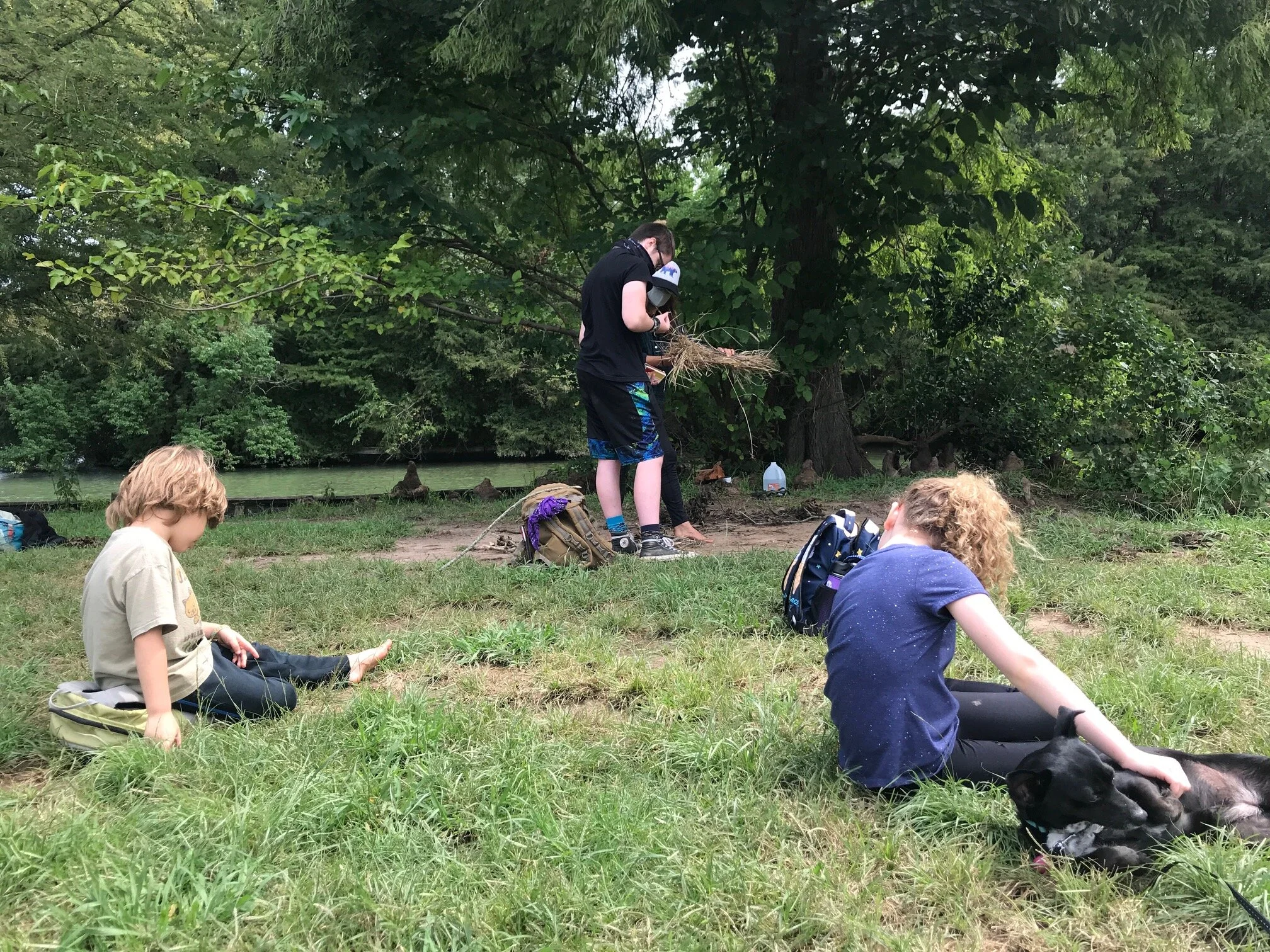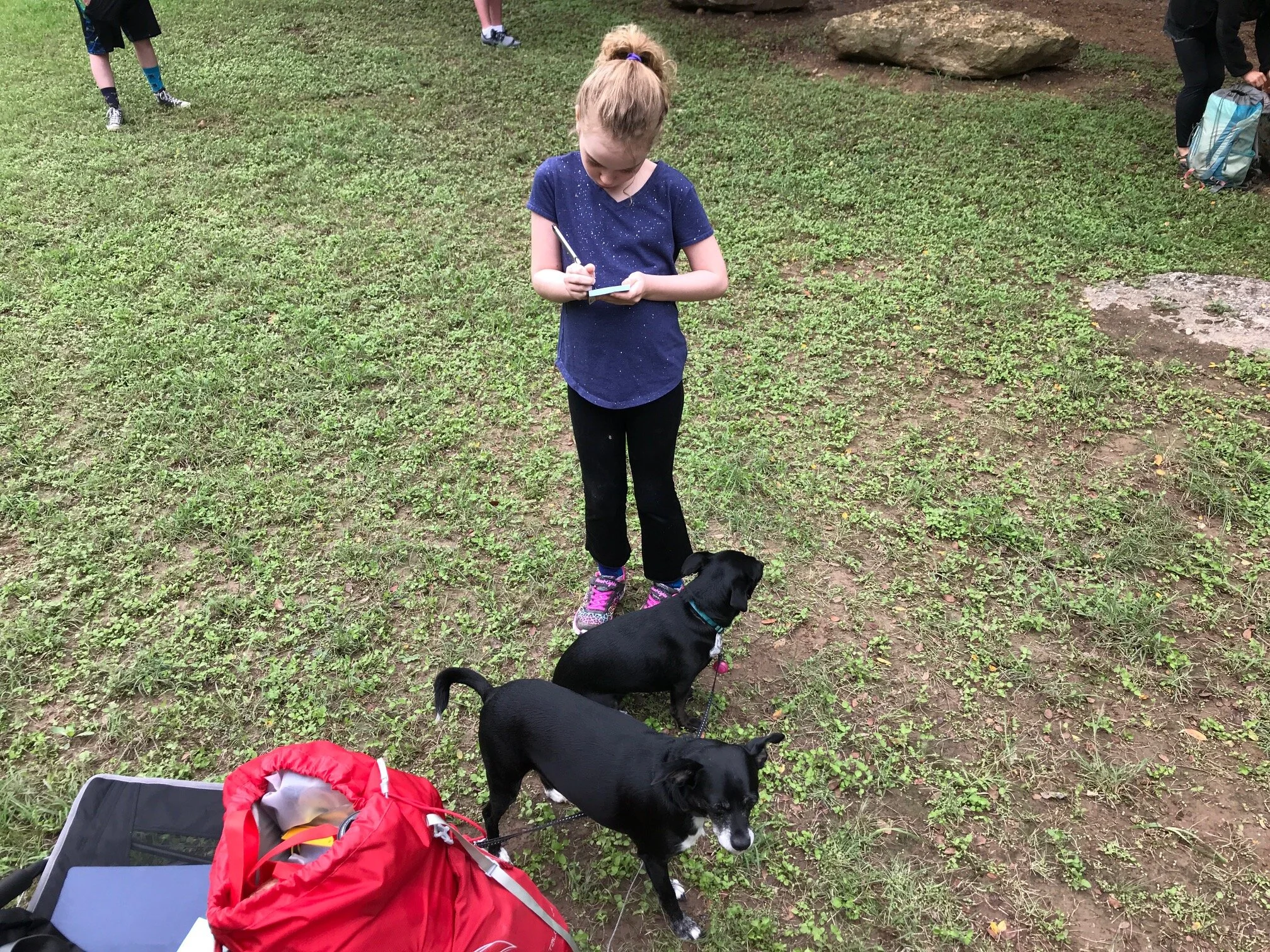On Friday we wrapped up our first week outdoors. We are now one week into the first of eleven cycles that will run through mid-July. The week was fun, and had lots of learning experiences embedded in it. Some of the fun:
Cell 1 put their blood, sweat, and tears into this week! Literally! A few injuries didn't stop us from exploring beautiful creek and waterfall views, building shelters and sharpening spears, and throwing dozens of rocks. A made a longbow that the other Learners found super impressive. J practiced all of his birds of prey calls (plus his Godzilla call for good measure). L planned out and practiced her lines for her hamster care video. And I oversaw some creek bed remodeling to increase water flow.
Younger Learners hanging out with the Cuddle Buddies while an older Learner and a Facilitator prep a fire
Cell 2 got some good exercise in as we went on moderate hikes two of the three days we were together. M went on two separate hikes to the top of the park, once with Antonio and once with Lauren. A and J spent a lot of time running around with each other all week, and with Cuddle Buddies Ivan and Ingrid on Friday. We did some arts and crafts; we talked about fire making (and made a fire) and outdoor cooking, gardening, and survival skills; and we enjoyed the opportunity to sit and watch and listen to nature. And we all enjoyed a variety of games and get-to-know you activities, with fire keeper seemingly being the favorite.
While we invested a lot of time and energy into preparing for being outdoors, there are some lessons that are best learned in real time. So I wanted to share some of those with you:
Remote meetings are easier when not combined with in-person meetings
Combining in-person meetings with remote meetings does a great disservice to both groups of Learners. We tried to have our couple of remote Learners join us in our morning and afternoon meetings earlier in the week, and connectivity issues aside, the ability of those remote Learners to connect with the in-person Learners was severely lacking. As hard as I tried to orient the camera so they could see the in-person Learners who were speaking or participating in activities, I could not effectively share what was happening in real time. The in-person Learners, meanwhile, could not see the remote Learners on my phone because we were distancing and moving around, and they could not easily hear them. By Wednesday we established separate check-ins for remote Learners so that I could give them my full attention.
Paying a lot of money for a hotspot does not guarantee connectivity when out in nature. Yes, we paid a lot of money for a hotspot so that we could connect with remote Learners while we were outdoors. Unfortunately, it’s been really hard to find a spot where that hotspot can support video connections. We are still in the process of trying to find a good location to set up at for the remote check-ins.
Going outdoors means we are much less likely than conventional schools to need to revert to remote learning due to Covid-19 outbreaks. But going outdoors can also mean that we have to go remote during extreme weather. We had to have a remote day on Wednesday due to all-day thunderstorms. We will need to decide as a community how much we want to try to host offerings and create connection on remote days versus just holding space for Learners when we cannot meet.
Pack lots of gauze. Accidents happen, especially when young people are given the freedom to play. So sometimes someone may cut themselves with their pocket knife, or someone may accidentally hit someone else’s finger with a rock. And sometimes these accidents happen multiple times per week, so we need to constantly refill our first aid kits.
Get out of the sun, get in the shade, and drink lots of water. We already knew this from our summer trainings, but helping the Learners take it to heart is something we need to continue to work on. There were definitely a couple of Learners who were physically drained by the heat at the end of the day on Friday.
We write down our intentions each morning
Fortunately we are intentionally agile, so we can take these lessons and quickly incorporate them into our practices. On Friday morning we had our first Check-in and Change-up meeting where we raised awarenesses and established practices that we will be working on as a community. Through this change-up process we get to co-create a culture that supports all Learners.
On to week two!
And sometimes we write down our intentions again, in the dirt





